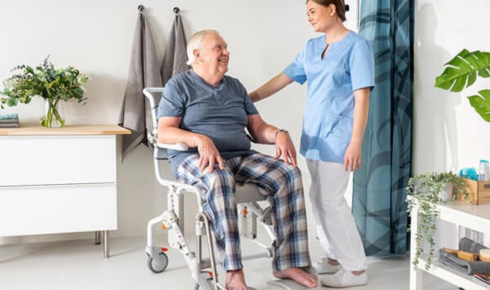Table of Contents
- Why Safety Matters in Cosmetic Procedures
- Types of Elective Cosmetic Procedures
- Researching the Procedure and Setting Expectations
- Tips for Choosing a Qualified Provider
- Risks and Realities of Cosmetic Surgery
- Key Questions to Ask During Consultation
- Preparing for a Safe Recovery
- Staying Updated With Industry Standards
Why Safety Matters in Cosmetic Procedures
The decision to undergo cosmetic procedures often brings visions of looking better and feeling more confident. While that self-evaluation is trustworthy, extra measures must always be taken to ensure the person’s safety. Whether it’s your first time considering a treatment or exploring new options like Botox Cary NC, understanding the critical elements of patient safety can make all the difference in your experience and outcome. Awareness of safety measures has been growing, particularly in the field of cosmetic treatments, as more and more people seek out budget-friendly options. Numerous studies reveal that, for the most part, cosmetic surgeries make people very happy. But without strict screening processes, safety, and experience, things could go wrong. Paying attention to details helps avoid hasty choices that can spring to mind when thinking about one’s health, both now and in the distant future.
Supervision from institutions like the U.S. Food and Drug Administration (FDA) highlights the need to look into the processes and providers performing procedures. The FDA specifically advises consumers to look past marketing and glossy pictures and instead look for credentials, proof of actual methodology, and proper dialogue. Safety should be demonstrated by the provider’s willingness to discuss known risks, alternatives, and tailored approaches to treatment. Addressing these concerns allows you to safeguard both your peace of mind and your investment early on.
Types of Elective Cosmetic Procedures
Cosmetic surgery procedures offer two broad categories of services. The desire for subtle or dramatic changes. Through injectables, fillers of the dermis, chemicals, and lasers, some changes can be brought about with minimal intrusion, although skill is necessary for speed. Other permanently and significantly altering changes provided through surgical facelifts, liposuctions, breast augmentations, et cetera require extensive prehabilitation, anaesthesia, and recovery in addition to post-op rehabilitation. Minimally and surgically intrusive options are increasingly fast in achieving desired outcomes at the expense of cautious preparation and anaesthesia.
Minimally invasive: Botox, chemical peeling, microdermabrasion, and filler procedures are done for quick results with minimal downtime, provided the more instant results courtesy of needle and laser come at the cost of periodic repetition for maintenance purposes.
Surgical: Common surgeries are liposuction for specific fat deposits, facelifts to restore a youthful appearance, and rhinoplasty to reshape the nose. These procedures are more demanding for both patient and provider when it comes to prep, aftercare, and finances.
Combination therapies: Even more popular is the combination of surgical and non-surgical approaches, such as facelift with resurfacing or filler injection, which seeks to achieve more comprehensive and harmonious results.
As with any procedure or treatment, selecting the most appropriate one is a personal choice. Health issues, medications, and results are all determining factors in what is reasonable. Your provider will assist you in identifying the procedure and timing that are most suitable to your situation with candid and constructive strategy sessions.
Researching the Procedure and Setting Expectations
Beauty enhancements are now a common thing to have. However, the reliability and quality of information can be from a range. Understanding the procedure, potential risks, costs, and follow-up routines helps maximise satisfaction. Having a clear understanding of the possible benefits and limitations helps in managing expectations and disappointment. For example, Botox can temporarily smooth lines but requires maintenance for lasting results. Users can find the right consultation questions from reliable medical texts, expert blogs, and even online communities. These supportive research conversations help in determining realistic expectations tailored to one’s body, the healing process, and the final results. More knowledge translates to greater confidence to move forward.
Tips for Choosing a Qualified Provider
Due to the rise in demand for optional procedures, it is important to select professionals who have the right skills and experience. Look for certification from the American Board of Surgery, as they go through rigorous training on aesthetics, safety procedures, and how to deal with complications. Ask how long they have been doing your desired procedure, how often they do it, and if they participate in continuing education. Look for board certification and specialty expertise relevant to your treatment. Look into their recent training, request genuine before-and-after photos from patients who shared similar concerns, and check if they have the necessary privileges to perform surgeries at accredited hospitals. Reviews and testimonials from patients help to understand the provider’s practice style, bedside manner, and typical results. Trust is built when there is clear communication on the risks involved, expectations, treatment, consistent results, and the entire process. This helps ensure a successful outcome.
Risks and Realities of Cosmetic Surgery
Cosmetic procedures carry risks, including infection, allergic reactions, prolonged swelling, and dissatisfaction with results. Nerve damage, blood clots, and needing to undergo additional surgery are some of the less common risks. It’s well known that sharing through informed consent with safe prior outcomes aids in making decisions. Considering motivation, acceptance of limits, and the chances of negative outcomes can help a patient feel less stress. Reasonable expectations on the best outcome and worst-case scenarios can also improve experiences for patients.
Key Questions to Ask During Consultation
Thorough consultations can resolve and mic issues while helping evaluate the exchange between patients and the providers. Understanding risks and benefits, recovery timelines, expected complications, pricing, and how often a patient would need the procedure done are all critical questions. Missed areas can be identified by trusted family members, friends, or even colleagues. There shouldn’t be any pressure to volunteer immediately. Ask for brochures, prepare notes, and make sure to have all questions considered. These documents can be great for empowering decision-making. Complications and necessary follow-ups should be addressed, too.
Preparing for a Safe Recovery
During preparation for a cosmetic procedure, make sure that there are practical arrangements set up that ensure smooth recovery, including meals, medications, rest, and sleep. Remain attentive to any unexpected symptoms such as swelling, discharge, or redness, and monitor the treated area. Assist in early detection by reporting concerns directly to the carer. During the recovery phase, actively disengage from any form of strenuous activity. Following a medication regimen and scheduled sleep time is key to an effortless, smooth, and highly efficient recovery from a cancelled strain.
Staying Updated With Industry Standards
To be below or above the industry standards, procedures should be done in a timely manner, incorporating the latest trends with recommended treatments and cutting-edge technology within the field. In line with the guidelines issued by the FDA, strict adherence and observance ought to be placed with statutes banning the circulation of information that is baseless and without the trust allocated toward the things in question and straightforward. Therefore, always engage with authoritative groups and educational channels that, by definition, support the goals of providing effective intervention.
In the end, being proactive about new developments in research and the industry enables you to take initiative in protecting your health and safety. Taking part in ongoing learning exercises, coupled with smart conversations and careful planning, ensures that the cosmetic journey enhances your self-assurance as well as your well-being.




